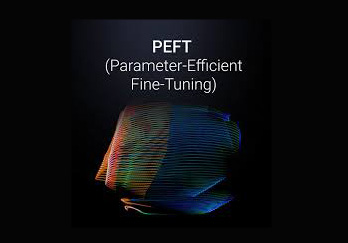In the ever-evolving field of natural language processing (NLP) and artificial intelligence, fine-tuning pre-trained models has become a common practice to achieve better performance on specific tasks. However, traditional fine-tuning approaches often require large amounts of data and computational resources, making them impractical for many real-world scenarios. To address this challenge, a novel technique called “Parameter Efficient Fine-Tuning” (PEFT) has emerged, enabling researchers and practitioners to maximize model performance with minimal data. In this article, we explore the concept of PEFT, its benefits, and how it revolutionizes the way we fine-tune NLP models.
Are you a newcomer to the world of machine learning and eager to grasp the intricacies of Parameter Efficient Fine-Tuning (PEFT)? Well, you’re in the right place! In this article, we’ll take you on a journey through the fascinating realm of PEFT, breaking down complex concepts into digestible pieces. By the end of this guide, you’ll have a comprehensive understanding of what PEFT is all about.
Table of Contents
- Introduction to PEFT
- What is Fine-Tuning in Machine Learning?
- Why Do We Need Parameter Efficiency?
- Why is PEFT Important?
- The PEFT Process
- Coding Example To Show Parameter Efficient Fine-Tuning (PEFT)
- Benefits of PEFT for Beginners
- Two Techniques PEFT Use are
- Conclusion
- FAQs
1. Understanding PEFT: The Basics
What is Parameter Efficient Fine-Tuning?
Fine-tuning is a crucial concept in machine learning, where pre-trained models are adapted to perform specific tasks. Instead of training a model from scratch, fine-tuning allows us to take advantage of existing knowledge encoded in a pretrained model. Parameter Efficient Fine-Tuning, or PEFT for short, is a cutting-edge technique in the world of machine learning and artificial intelligence. It plays a crucial role in training large language models, such as GPT-3.5, which are widely used in various applications, including natural language processing, chatbots, and content generation.
PEFT is essentially a process of fine-tuning a pre-trained language model using a minimal amount of data and computational resources. It aims to maximize the efficiency of the model while maintaining or even enhancing its performance. This means that you can achieve remarkable results with less data and computing power, making it a game-changer in the field of AI.
Hugging Face is a community from where you can choose the model to fine tune it accordingly.
Why Do We Need Parameter Efficiency?
Parameter efficiency becomes essential when we want to deploy machine learning models in resource-constrained environments. It helps optimize model size and computational requirements, making it easier to use machine learning in real-world applications.
2. Why is PEFT Important?
Saving Time and Resources
As a newbie, you might wonder why we can’t just train a new model for every task. The answer lies in the resource-intensive nature of training deep learning models. It can take days or even weeks to train a model from scratch, not to mention the substantial computational power required. PEFT steps in to save both time and resources by leveraging pre-existing knowledge within a model.
Generalization to New Tasks
Another key aspect of PEFT is its ability to generalize. Pre-trained models have learned a wide range of features and patterns from their initial training. When fine-tuned for a specific task, they can adapt and apply this knowledge effectively, often outperforming models trained solely for that task.
3. The PEFT Process
Now, let’s break down the steps involved in Parameter Efficient Fine-Tuning.
1. Pre-trained Models
PEFT begins with a pre-trained model. These models are usually trained on massive datasets and have learned a multitude of patterns and features. Think of them as the ‘knowledge base’ for your task.
2. Task-Specific Data
Next, you need data related to your specific task. This data will be used to fine-tune the pre-trained model, making it more specialized.
3. Fine-Tuning
Fine-tuning is the heart of PEFT. During this process, the pre-trained model is trained further using your task-specific data. The model adapts to recognize patterns relevant to your task.
4. Evaluation
After fine-tuning, it’s crucial to evaluate the model’s performance. This step ensures that the model is indeed improving for your specific task.
5. Iteration
PEFT often involves multiple iterations of fine-tuning and evaluation to achieve the best results.
4. Coding Example To Show Parameter Efficient Fine-Tuning (PEFT)
import torch
from transformers import AutoModelForSequenceClassification, AutoTokenizer, Trainer, TrainingArguments
from sklearn.metrics import accuracy_score, precision_recall_fscore_support
// Define the pre-trained model and tokenizer
model_name = "bert-base-uncased"
tokenizer = AutoTokenizer.from_pretrained(model_name)
model = AutoModelForSequenceClassification.from_pretrained(model_name, num_labels=2) # Example: Binary classification
// Define your training and validation datasets
train_dataset = ...
val_dataset = ...
// Define training arguments
training_args = TrainingArguments(
output_dir="./finetuned_model",
num_train_epochs=3,
per_device_train_batch_size=8,
per_device_eval_batch_size=8,
logging_dir="./logs",
logging_steps=100,
evaluation_strategy="steps",
eval_steps=500,
)
// Define a function to compute metrics
def compute_metrics(p):
preds = p.predictions.argmax(-1)
labels = p.label_ids
accuracy = accuracy_score(labels, preds)
precision, recall, f1, _ = precision_recall_fscore_support(labels, preds, average="binary")
return {"accuracy": accuracy, "precision": precision, "recall": recall, "f1": f1}
// Create a Trainer instance
trainer = Trainer(
model=model,
args=training_args,
train_dataset=train_dataset,
eval_dataset=val_dataset,
compute_metrics=compute_metrics,
)
// Fine-tune the model
trainer.train()
// Evaluate the fine-tuned model
results = trainer.evaluate()
print(results)
In this code example:
- We start by importing the necessary libraries and defining the pre-trained model and tokenizer. You can replace “bert-base-uncased” with other pre-trained models based on your task.
- We define your training and validation datasets. You need to load your data and preprocess it using the tokenizer provided by Hugging Face.
- We define training arguments such as the output directory, training epochs, batch sizes, and evaluation strategy.
- We define a function to compute evaluation metrics. In this example, we compute accuracy, precision, recall, and F1-score.
- We create a Trainer instance, passing in the model, training arguments, training dataset, evaluation dataset, and the compute_metrics function.
- We fine-tune the model using the
trainer.train()method. - Finally, we evaluate the fine-tuned model using the
trainer.evaluate()method and print the results.
By following this code example and adjusting it to your specific task and dataset, you can perform parameter-efficient fine-tuning of pre-trained models using Hugging Face’s Transformers library. This allows you to adapt powerful language models to your NLP tasks with minimal additional parameters and computational resources.
5. Benefits of PEFT for Beginners
Now that we understand the process, let’s explore why PEFT is particularly beneficial for newcomers to the field.
1. Accessibility
PEFT allows beginners to leverage the power of pre-trained models, even if they don’t have the resources to train models from scratch. It democratizes the field of machine learning.
2. Learning Opportunity
By working with PEFT, beginners can gain hands-on experience in fine-tuning models. This practical knowledge is invaluable for understanding the nuances of machine learning.
3. Quick Results
PEFT often yields quicker results compared to training models from the ground up. This can be encouraging and motivating for those starting in the field.
1. Resource Efficiency
One of the primary advantages of PEFT is its resource efficiency. Traditional fine-tuning processes often require massive datasets and substantial computational resources. In contrast, PEFT allows you to achieve comparable results with significantly less data and computing power. This efficiency can save both time and money in the model training process.
2. Faster Iterations
PEFT enables faster iterations in model development. With quicker turnaround times, you can experiment with different models and configurations, fine-tune them, and adapt to changing requirements more efficiently. This agility can be a game-changer in industries where staying ahead of the competition is critical.
3. Improved Model Generalization
Parameter Efficient Fine-Tuning can lead to improved model generalization. This means that the model can perform better on tasks it hasn’t seen during training, making it more versatile and adaptable to various real-world applications. It enhances the model’s ability to understand and generate human-like content.
Two Techniques PEFT Use are:
1. Low-rank Adaptation (LoRA)
2. Prompt Tuning
http://alliknows.com/low-rank-adaptation-lora-a-peft-technique-for-large-language-models/
http://alliknows.com/the-power-of-prompt-tuning-in-efficient-fine-tuning-for-language-models/
Conclusion
Parameter Efficient Fine-Tuning (PEFT) has emerged as a groundbreaking technique in the realm of NLP and artificial intelligence. By effectively utilizing limited data and optimizing model performance, PEFT opens new possibilities for applications in various domains. As technology advances and data becomes more accessible, PEFT is set to play a crucial role in shaping the future of AI-driven solutions.
In summary, Parameter Efficient Fine-Tuning (PEFT) is a machine learning technique that empowers beginners and experts alike to optimize pre-trained models for specific tasks efficiently. It saves time, conserves resources, and provides an excellent learning opportunity for newcomers to the field. So, as you continue your journey into the world of machine learning, remember that PEFT is your ally in achieving outstanding results without reinventing the wheel. Happy fine-tuning!
FAQs
What is the primary goal of PEFT?
The primary goal of PEFT is to make machine learning models more efficient by reusing pretrained knowledge and optimizing their parameters for specific tasks, reducing resource requirements.
How does PEFT benefit small-scale businesses?
PEFT enables small-scale businesses to leverage machine learning without substantial computational resources, making AI solutions more accessible and cost-effective.
Can PEFT be applied to reinforcement learning?
Yes, PEFT techniques can be adapted for reinforcement learning tasks to improve the efficiency of training and deployment.
Are there any open-source PEFT resources ?
Yes, there are several open-source libraries and frameworks available for PEFT, such as PyTorch and TensorFlow, along with pre-trained models that can be freely accessed.
What ethical concerns surround PEFT?
Ethical concerns include bias in pretrained models, responsible data usage, and the potential for misuse in sensitive applications. It’s important to consider these issues when implementing PEFT in AI projects.
Can PEFT be applied to any NLP task?
Yes, PEFT is versatile and can be applied to a wide range of NLP tasks, including sentiment analysis, text classification, and named entity recognition.
Is PEFT applicable only to language models?
While PEFT is commonly used in NLP, its principles can be extended to other machine learning domains for parameter-efficient training.
Does PEFT require specialized hardware for implementation?
No, PEFT can be implemented on standard hardware, making it accessible to a broader range of users.
Can PEFT be combined with traditional fine-tuning methods?
Yes, researchers often combine PEFT with traditional fine-tuning approaches to further enhance model performance.


Pingback: What is Low-Rank Adaptation (LoRA) - How it works Example Code - AlliKnows